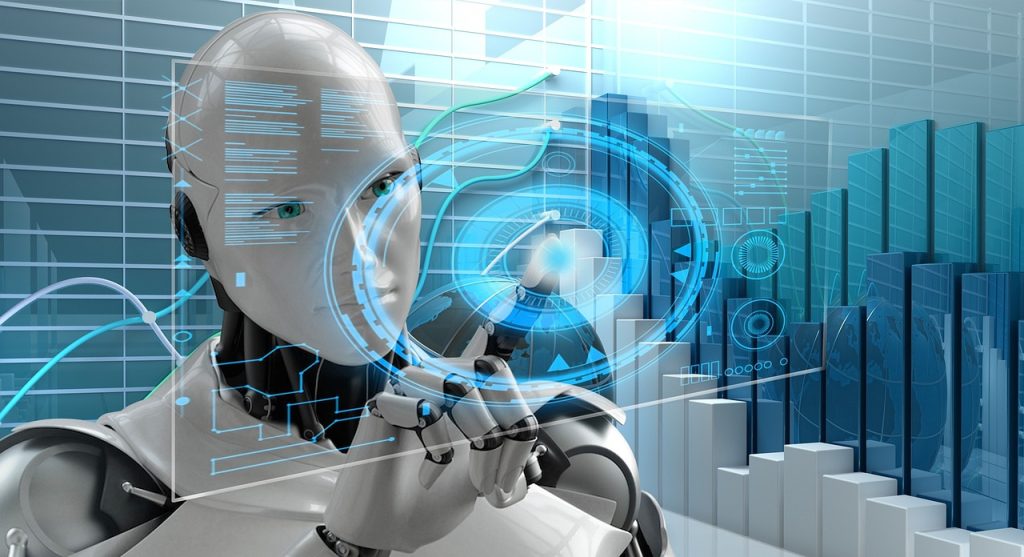
AI Replacing Professions
Artificial intelligence (AI) is a rapidly evolving technology that has the potential to transform many aspects of our lives, including the way we work. There are already many examples of AI being used to automate tasks and replace certain professions, and it is likely that this trend will continue in the future. AI Replacing Professions
One of the main benefits of AI is its ability to perform repetitive and routine tasks faster and more accurately than humans. This means that it can potentially replace jobs that involve a lot of data entry, processing, or analysis. For example, AI can be used to process and analyze large amounts of data, such as financial records or medical records, which can save time and reduce the need for human labor.
AI can also be used to automate certain tasks in manufacturing and other industries. For example, robots and automated systems can be programmed to perform tasks such as welding, painting, and assembly, which can reduce the need for human labor.
However, AI is not yet capable of replacing all professions, and it is unlikely that it will be able to fully replace many jobs that require complex problem-solving, creativity, or interpersonal skills. For example, jobs that involve providing customer service, teaching, or counseling are unlikely to be fully replaced by AI in the near future.
Overall, it is likely that AI will continue to replace some professions and change the way many jobs are done in the future. However, it is important to recognize that AI can augment and enhance human capabilities, rather than completely replace them. To prepare for the future of work, it will be important for individuals to continuously learn and adapt to new technologies and skills that can help them stay relevant in the changing job market. AI Replacing Professions
Advantages and Disadvantages of AI
Artificial intelligence (AI) is a technology that involves the use of computers and algorithms to perform tasks that would normally require human intelligence, such as learning, problem-solving, and decision-making. AI has the potential to transform many aspects of our lives and has already been applied in a variety of fields, including healthcare, transportation, finance, and manufacturing.
Advantages of AI:
- Increased efficiency: AI can perform tasks faster and more accurately than humans, which can save time and reduce the risk of errors.
- Reduced costs: AI can automate tasks that would normally require human labor, which can reduce labor costs and increase profitability.
- Improved decision-making: AI can analyze large amounts of data and provide insights and recommendations that can help humans make better decisions.
- Increased safety: AI can be used to automate tasks that are dangerous or hazardous for humans, such as mining or construction.
Disadvantages of AI:
- Job displacement: AI can replace certain jobs, which could lead to unemployment or a need for workers to learn new skills.
- Ethical concerns: AI can be programmed to make decisions based on algorithms, which may not take into account ethical or moral considerations.
- Security risks: AI systems can be vulnerable to hacking and other types of cyber attacks, which could have serious consequences.
- Lack of transparency: AI systems can be difficult to understand and interpret, which can make it difficult to understand how they arrived at certain decisions.
- Overall, AI has the potential to bring many benefits, but it is important to consider the potential risks and challenges and address them in a responsible and transparent manner.
Medical Doctor vs AI
Artificial intelligence (AI) has the potential to transform many aspects of healthcare, including diagnosis, treatment, and research. However, it is important to recognize that AI is not a replacement for human doctors, but rather a tool that can augment and enhance their capabilities.
Advantages of using AI in healthcare:
- Increased efficiency: AI can analyze large amounts of data and provide insights and recommendations that can help doctors make more accurate diagnoses and treatment plans.
- Improved patient care: AI can help doctors identify patterns and trends in patient data that may not be immediately apparent, which can improve patient outcomes.
- Reduced costs: AI can automate certain tasks, such as data entry and analysis, which can reduce labor costs and improve efficiency.
- Increased access to care: AI can be used to provide telemedicine services and other forms of remote care, which can increase access to healthcare for people in underserved or rural areas.
Disadvantages of using AI in healthcare:
- Ethical concerns: AI systems can be programmed to make decisions based on algorithms, which may not take into account ethical or moral considerations.
- Security risks: AI systems can be vulnerable to hacking and other types of cyber attacks, which could have serious consequences for patient data and privacy.
- Lack of transparency: AI systems can be difficult to understand and interpret, which can make it difficult to understand how they arrived at certain decisions.
- Job displacement: AI can replace certain jobs, such as medical coding and billing, which could lead to unemployment or a need for workers to learn new skills.
- Overall, AI has the potential to bring many benefits to healthcare, but it is important to recognize that it is not a replacement for human doctors and that it should be used in a responsible and transparent manner.
Engineering and AI
Artificial intelligence (AI) has the potential to transform many aspects of engineering, including design, analysis, and manufacturing. AI can be used to analyze large amounts of data and provide insights and recommendations that can help engineers make better decisions and improve the efficiency of their work.
Advantages of using AI in engineering:
- Increased efficiency: AI can analyze large amounts of data and provide insights and recommendations that can help engineers design and analyze products and systems more efficiently.
- Improved decision-making: AI can help engineers identify patterns and trends in data that may not be immediately apparent, which can improve the quality and performance of products and systems.
- Increased innovation: AI can be used to generate and evaluate new ideas and concepts, which can help engineers, explore new possibilities and improve the innovation process.
- Reduced costs: AI can automate certain tasks, such as data entry and analysis, which can reduce labor costs and improve efficiency. AI Replacing Professions
Disadvantages of using AI in engineering:
- Ethical concerns: AI systems can be programmed to make decisions based on algorithms, which may not take into account ethical or moral considerations.
- Security risks: AI systems can be vulnerable to hacking and other types of cyber attacks, which could have serious consequences for product and system performance.
- Lack of transparency: AI systems can be difficult to understand and interpret, which can make it difficult to understand how they arrived at certain decisions.
- Job displacement: AI can replace certain jobs, such as drafting and design, which could lead to unemployment or a need for workers to learn new skills.
- Overall, AI has the potential to bring many benefits to engineering, but it is important to recognize that it is not a replacement for human engineers and that it should be used in a responsible and transparent manner.
Graphics Designing vs AI
Artificial intelligence (AI) has the potential to transform many aspects of graphics design, including image and video editing, layout and design, and content creation. AI can be used to analyze large amounts of data and provide insights and recommendations that can help designers make better decisions and improve the efficiency of their work.
Advantages of using AI in graphics design:
- Increased efficiency: AI can automate certain tasks, such as image and video editing, which can save time and reduce the need for manual labor.
- Improved decision-making: AI can help designers identify patterns and trends in data that may not be immediately apparent, which can improve the quality and performance of designs.
- Increased innovation: AI can be used to generate and evaluate new ideas and concepts, which can help designers explore new possibilities and improve the innovation process.
- Reduced costs: AI can automate certain tasks, such as data entry and analysis, which can reduce labor costs and improve efficiency.
Disadvantages of using AI in graphics design:
- Ethical concerns: AI systems can be programmed to make decisions based on algorithms, which may not take into account ethical or moral considerations.
- Security risks: AI systems can be vulnerable to hacking and other types of cyber attacks, which could have serious consequences for the quality and performance of designs.
- Lack of transparency: AI systems can be difficult to understand and interpret, which can make it difficult to understand how they arrived at certain decisions.
- Job displacement: AI can replace certain jobs, such as image and video editing, which could lead to unemployment or a need for workers to learn new skills.
- Overall, AI has the potential to bring many benefits to graphics design, but it is important to recognize that it is not a replacement for human designers and that it should be used in a responsible and transparent manner. AI Replacing Professions
Aviation Vs AI
Artificial intelligence (AI) has the potential to transform many aspects of aviation, including air traffic control, aircraft design, and maintenance. AI can be used to analyze large amounts of data and provide insights and recommendations that can help improve the efficiency and safety of aviation operations.
Advantages of using AI in aviation:
- Increased efficiency: AI can analyze large amounts of data and provide insights and recommendations that can help optimize aviation operations and reduce the risk of errors.
- Improved safety: AI can be used to monitor aircraft systems and identify potential issues before they occur, which can improve safety and reduce the risk of accidents.
- Increased innovation: AI can be used to generate and evaluate new ideas and concepts, which can help improve aircraft design and performance.
- Reduced costs: AI can automate certain tasks, such as data entry and analysis, which can reduce labor costs and improve efficiency.
Disadvantages of using AI in aviation:
- Ethical concerns: AI systems can be programmed to make decisions based on algorithms, which may not take into account ethical or moral considerations.
- Security risks: AI systems can be vulnerable to hacking and other types of cyber attacks, which could have serious consequences for aviation operations.
- Lack of transparency: AI systems can be difficult to understand and interpret, which can make it difficult to understand how they arrived at certain decisions.
- Job displacement: AI can replace certain jobs, such as air traffic control, which could lead to unemployment or a need for workers to learn new skills.
- Overall, AI has the potential to bring many benefits to aviation, but it is important to recognize that it is not a replacement for human pilots and other aviation professionals and that it should be used in a responsible and transparent manner. AI Replacing Professions
Image by sujin soman from Pixabay

